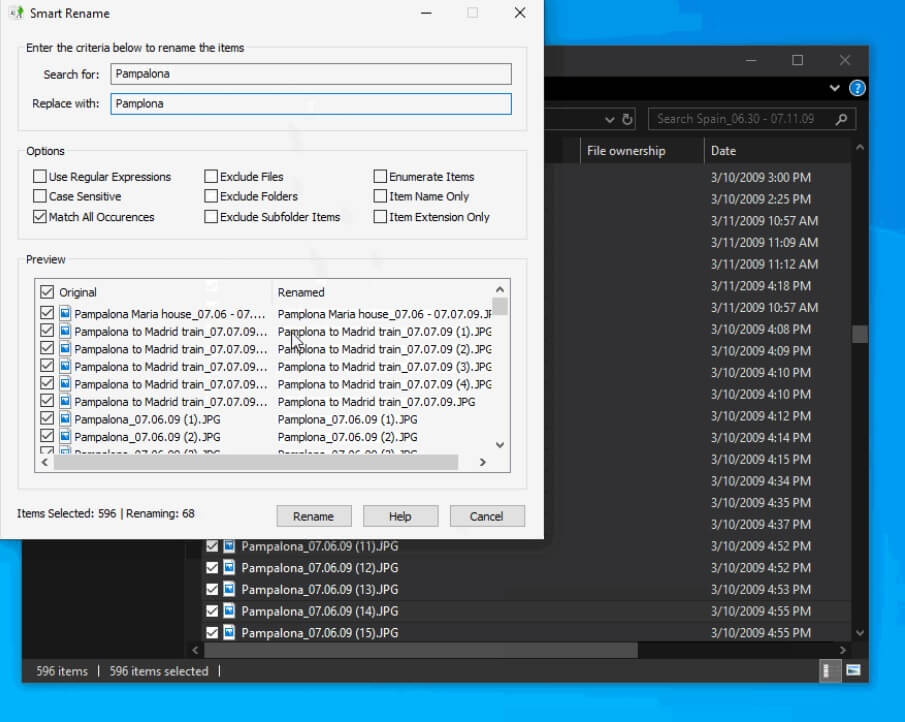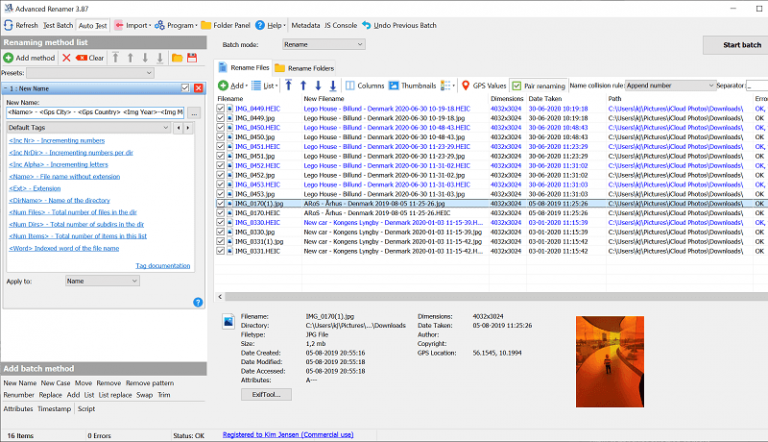
Once all images are loaded into the work space, highlight the image(s) you plan to rename by referring to the image(s) metadata.You can do this by clicking the Add new images for processing button or by dragging and dropping images into the work space located on the left side of your ImBatch window. Next, load the images that you plan to work with.Renaming a batch of images to a specific naming convention
#Bulk image renamer how to
To learn more about how to add a rename task, read on. You can specify any existing meta tag value that you’d like ImBatch to reference, and this value will automatically be added to your new image files when you save them. A feature that can be found under the Other grouping under Add Task, Rename is a powerful and convenient option when you need to save time. Using the -fileOrder DateTimeOriginal argument makes sure that images are processed in order, and numbering strictly follows that order, otherwise shots takes in quick succession are not guaranteed to be renumbered in exact order they were taken.ImBatch allows users to rename image files through the use of templates. Numbering begins at 001 and continues to 999, so if you shoot 1000 or more images in one day you must modify the script (change 3nc to 4nc, the numeric value = how many digits to use). Selected files are renamed in the following pattern YYYYMMDD-001.jpg. It also ignores any files that are not JPEGs so I do not need to worry about what is in subdirectories. I use the following script, placed in ~/.local/share/nautilus/scripts (this should work for any Linux distro using Nautilus as a file manager): #!/bin/bashĮxiftool -fileOrder DateTimeOriginal -recurse -extension jpg -ignoreMinorErrors '-FileName If you use this method to copy images from a card into some other directory and then run it again on the same set of images, you will end up with identical files numbered 000 and 001.įor simple things where the flexibility, power, and complication of ExifTool aren't necessary, I like to use the tool jhead. Note that this does not weed out duplicates. When picking a name, ExifTool will keep incrementing the copy number until it finds a filename that doesn't exist and rename the file to that. If you had multiple files created during the same second, each successive rename would overwrite the last file and all you'd get is the last one. You can also specify individual images if you want.Ībout the copy number: This is an important thing to put in your filenames because many cameras don't provide fractional seconds in their timestamps. is the path of the directory where you want to operate. The next argument tells ExifTool to change the filename to whatever is in the CreateDate field in the EXIF using the date format specified earlier.įinally, the. I'll explain why that's important in a minute. The three zeros after the time are a copy number put there by %%-03.c in the date format. The pattern contains date format codes that fill in various bits and pieces from the date. The -d switch tells ExifTool to format dates according to the next argument's pattern. It has a steep learning curve, but once you're over it, the kind of renaming you're after is a snap: exiftool -d '%Y%m%d-%H%M%%-03.c.%%e' '-filename




 0 kommentar(er)
0 kommentar(er)
